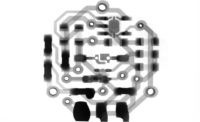In my last column, I centered on “A Day in the Life of a DDC Startup Technician.” Continuing on that theme, I’m going to be talking about the same sorts of topics for a DDC application engineer this month. I have some experience in this role, but there are definitely folks I work with who have done it better and for longer. The background here is still in the context of medium to large contractors that provide building automation systems. At this level, a teams-based approach is applied, and an engineering team handles the first portions of projects after sales, verifying the scope of work, choosing appropriate products to use, creating constructible shop drawings, and, in some cases, handling procurement.
Speaking with a few of the DDC application engineers I work with, some of the most challenging aspects of the job come down to change management. Those who do this job should be well-organized and have a repeatable and systematic approach to their work, doing a favor for their future selves.
A colleague shared a story where a project was in the late phases of work and being started up, and a question came up about what appeared to be missing flow switches in a heating hot water system. These were not straightforward pieces of instrumentation to the retrofit. The mechanical design drawing package showed the flow switches, but our shop drawings did not, so answers were needed quickly. As it turned out, over a year prior, a request for information (RFI) response had approved removing these switches from our bill of materials because the mechanical contractor’s submittals included redundant devices in the factory package for the boilers themselves.
Rewarding aspects of the job, much like other areas of the engineering profession, are: detailed knowledge and problem-solving. My colleagues speak about the experience of doing takeoffs for a brand-new set of construction drawings. They feel like they’re getting insider knowledge of the building’s inner workings and moving parts well before any of it exists. They form working models in their minds of how the building will respond to changes in load as the sun moves across the sky and people come and go. They can imagine the streams of air, water, and data coursing through the building’s interstitial spaces and serving the needs of the occupants.
My colleagues also take pride in the work they do with shop drawings. A measure of a good shop drawing package is to what degree an installer, startup technician, or programmer can use it to get familiar with what a project requires without any other introduction. When using subcontractors for installation work, this is even more important. One element of shop drawings that often pays off for special attention is hydronic system layouts. While ductwork on mechanical drawings is relatively easy to trace out and represent in shop drawings, piping can be more nuanced. There are usually more fixtures, turns, and paths to consider. It’s a valuable task to condense that detail into one or two sheets of schematic layout your team can use in the field to make the system work properly.
There’s a belief held by some that the DDC application engineer has a desk job. In my experience, there is a substantial portion of time planning and designing using software tools while sitting down, but there is often an aspect of spending some time in the field, especially if the company does “retrofit” work, upgrading or adding a building automation system to an existing building. Determining things like replacement hardware for valves and actuators and determining system layouts for air-handling and hydronic systems requires field surveys. One of my colleagues shared a story about a time he was adding controls to an existing historical chapel on a private university campus, and the building included an underground crypt. As part of the survey, he had to go through the crypt, which was a harrowing experience!
Since a building automation system’s key features include dynamic adjustment to a building’s requirements, there are edge cases of operation that can hardly be planned for. As they become aware of them, the DDC application engineer can learn from them and apply the learnings to the next job. I did have the pleasure of sharing with my colleague a recent edge case that had him stumped as to how to plan for. The project required monitoring of a supply air detector’s auxiliary contact on a 100% outside air unit. During commissioning efforts, the chilled water valve for the unit was indexed to 0%, 50%, and 100% open while the unit was running. This was on a hot summer day in North Carolina, and the sudden burst of moisture was introduced when the chilled water valve was closed, which tripped the supply air duct detector. When the smoke detector tripped, the unit shut off, and it took some methodical adjustment to get enough air movement around the duct detector to clear the alarm condition. For some background on this, the chilled water valve actuator was wired to go to 100% open on a loss of power, and the unit is designed to run 24/7. So, this particular condition is hardly one to plan for.
For career growth, it’s important to keep doing things you’ve never done before, and my colleagues shared some stories about this. Demand control ventilation (DCV) is a somewhat nuanced control strategy that deals with tuning the amount of outdoor air intake based on the carbon dioxide sensed in a space that has highly variable occupancy. Classic examples of this are conference rooms, classrooms, and auditoriums. The typical “levers to pull” are things like dampers on an outdoor air intake, fan speeds, and others. However, my colleague once had the challenge of designing a control strategy for an indoor basketball stadium for a major Division I NCAA team. Instead of designing a control strategy that turns up and down for tens or a couple of hundred people, this system had to turn up and down for thousands. In the end, his control strategy involved accomplishing turn up and turn down with redundant air-handling equipment that rotated for runtime equalization to keep all in good working order.
With the advent of more advanced sequences of operation, such as those introduced in ASHRAE GPC 36, the requirement for sensors and dynamically adjusting systems just grows and grows. Add to the mix a newfound focus on IAQ available with new and old air-purification techniques and increased ventilation standards. And, then, on yet another front, we are seeing the cross-pollination of IoT best practices, machine learning, artificial intelligence, and an enhanced occupant experience. To keep up, a DDC application engineer has a brave new world of topics to explore and become familiarized with, as they intuit what an owner really needs and delivers a design for the solution.





